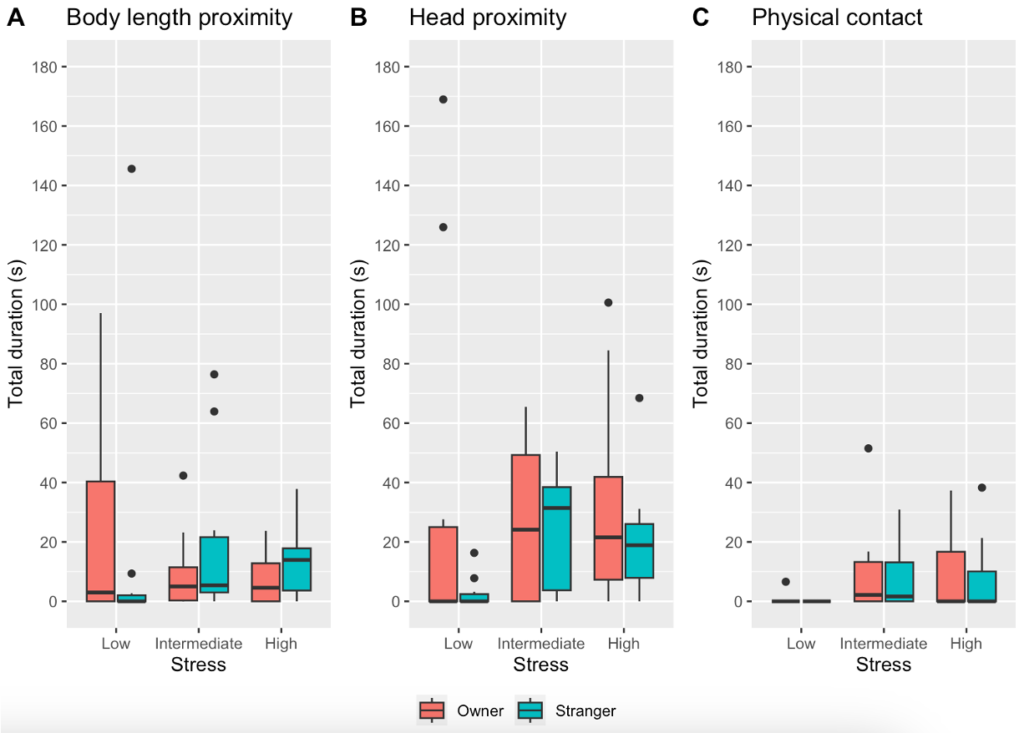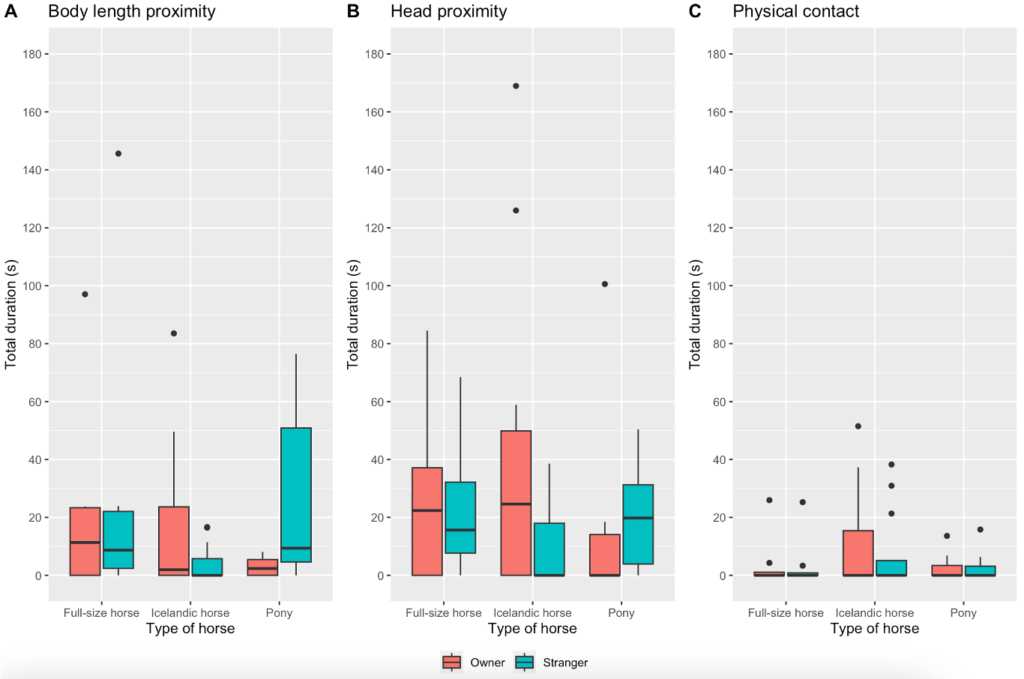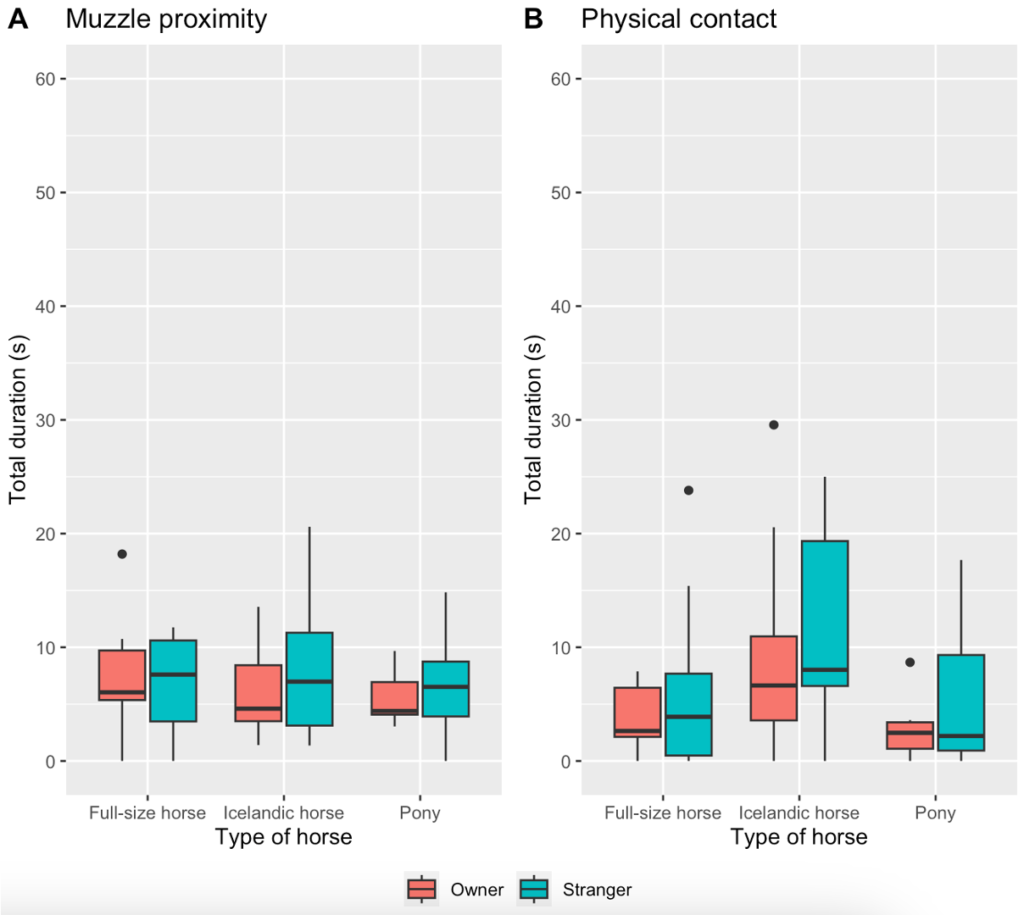Separation-reunion test
There was no significant difference in the total duration or the total number of times any of the behaviors (body length proximity, head proximity, physical contact) occurred.
Stress did however have an effect on the horses’ contact-seeking behavior towards the stranger. Horses with a high stress score were in more body length proximity to the stranger than horses with a low stress score (Fig. 1A). Horses with an intermediate and high stress score were also in more head proximity to the stranger than horses with a low stress score (Fig. 1B). Horses with a high stress score were also in less physical contact with the stranger than horses with an intermediate stress score (Fig. 1C).

Figure 1: Boxplot of the body length proximity duration (s) (A), head proximity duration (s) (B) and physical contact duration (s) (C) during the separation-reunion test with owner (orange boxes) and stranger (blue boxes) for horses that obtained a low, intermediate, or high stress score.
Stress also affected the horses’ contact-seeking behavior towards the owner. Horses with a high stress score spent less time in body length proximity to the owner than horses with a low stress score (Fig. 1A). Horses with intermediate and high stress scores spent more time in both head proximity (Fig. 1B) and physical contact (Fig. 1C) with the owner than horses with a low stress score.
Type of horse also affected the horses’ contact-seeking behavior. Icelandic horses spent less time in body length proximity to the stranger than ponies did (Fig. 2A). Icelandic horses also spent less time in head proximity to the stranger than both ponies and full-size horses did (Fig. 2B).

Figure 2: Boxplot of the body length proximity duration (s) (A), head proximity duration (s) (B) and physical contact duration (s) (C) during the separation-reunion test with owner (orange boxes) and stranger (blue boxes) for full-size horses, Icelandic horses, and ponies.
Contact-seeking behaviors towards the owner were also affected by type of horse. Ponies spent less time in both body length proximity (Fig. 2A) and head proximity (Fig. 2B) to the owner than full-size horses and Icelandic horses did.
Odor preference test
There was no significant difference in the total duration or the total number of times any of the behaviors (muzzle proximity, physical contact) occurred.
Type of horse did not affect the horses’ muzzle proximity to either the bucket containing the owner’s odor or the bucket containing the stranger’s odor (Fig. 3A). Icelandic horses were however in more physical contact with the bucket containing the stranger’s odor than full-size horses (Fig. 3B) and were also in more physical contact with the bucket containing the owner’s odor than both full-size horses and ponies (Fig. 3B).

Figure 3: Boxplot of the physical contact duration (s) (A) and the muzzle proximity duration (s) (B) during the odor preference test with owner (orange boxes) and stranger (blue boxes) for Icelandic horses, full-size horses, and ponies.